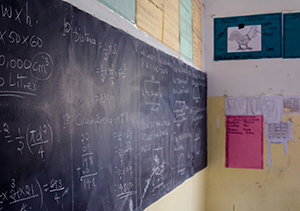+255 22 2 807 780
Mathematics
AIM
Our principal aim is to nurture in our pupils a love of mathematics. It is a subject that is vital for everyday life, and we want our children to develop the skills, knowledge and understanding that will help them to appreciate how mathematics fits into our world. In this way we ensure that our pupils will develop a fascination for and a real sense of enjoyment in the subject
Approach
 The curriculum combines the acquisition of key mathematical skills in number and topic work, with opportunities to apply these skills to real life situations, developing the children’s knowledge and enabling them to work effectively in the world at large. Children enjoy and appreciate how mathematics fits into our world and its usefulness in their future, increasing both their understanding and confidence. A child’s individual learning style is at the forefront of our mind when teaching mathematics, ensuring a practical, interactive experience which supports and extends where necessary.
The curriculum combines the acquisition of key mathematical skills in number and topic work, with opportunities to apply these skills to real life situations, developing the children’s knowledge and enabling them to work effectively in the world at large. Children enjoy and appreciate how mathematics fits into our world and its usefulness in their future, increasing both their understanding and confidence. A child’s individual learning style is at the forefront of our mind when teaching mathematics, ensuring a practical, interactive experience which supports and extends where necessary.
Number work begins by ensuring number bonds, times tables and place value are all secure and these skills are reinforced throughout the whole curriculum. The four rules of number: adding, subtracting, multiplying and dividing, are developed through mental strategies and then written methods, extending to long multiplication and division in higher years. Fractions, decimals and percentages work is introduced in a practical way, and then grows in complexity further up the school, with clear links to real life applications such as money and ratio. Negative numbers are also explored, linking with temperature. Algebraic methods, pattern and sequences are introduced in the higher years.
A number of mathematical topics are contained within the mathematics curriculum. The skills needed to measure length, weight, capacity and time are developed and are then applied to problems and investigations, and ensuring understanding is applied and consolidated. The classification of shapes and their properties, including their area, perimeter and volume is also reinforced in the curriculum, along with work on angles, nets and symmetry. Data handling begins with the basic construction of graphs and use of co-ordinates and develops to include a range of methods to collect and present data and the use of averages and statistics to present information.
At the core of the mathematical curriculum is practical application. Through developing topics and exploring word problems, children are able to understand the impact of mathematics in real life situations. This allows them to explore more complex mathematical concepts, such as profit and loss, budgeting and mathematical predictions, making our children more creative and imaginative thinkers.
